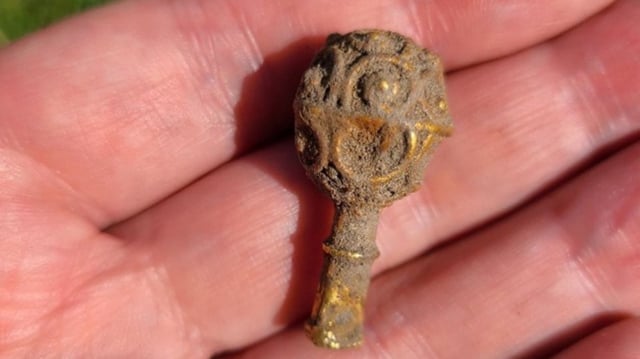Overview
- Newcastle University undergraduate Yara Souza uncovered a 4 cm gold ball-headed pin within 90 minutes of her first field excavation at Redesdale in Northumberland.
- Archaeologists provisionally dated the knob-shaped artifact to roughly A.D. 800–1000 and identified a near-identical piece found in 2021 by metal detectorist Alan Gray.
- The Portable Antiquities Scheme has officially recorded the discovery and is carrying out further scientific analysis to clarify its ceremonial and cultural significance.
- Experts interpret the rare gold pins as markers of elite or religious activity along Dere Street, a former Roman road that remained a key north–south route into the medieval era.
- After detailed study, both artifacts are slated for public display at the Great North Museum: Hancock, showcasing collaboration among academic and heritage organizations.
